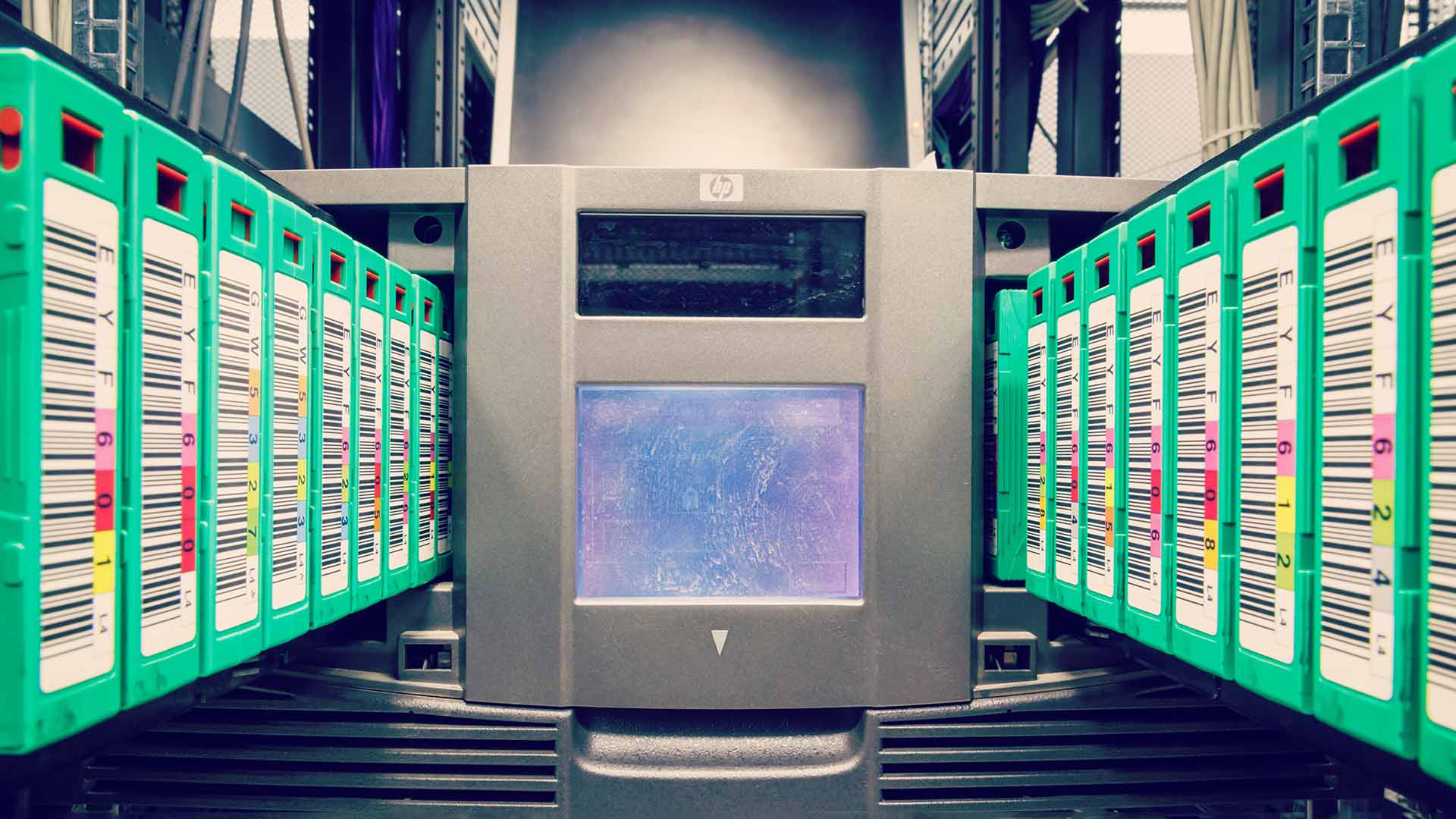
LTO-9 is now available, but the roadmap to its release was changed and it doesn’t have the amount of storage it was originally meant to have. Has tape still got a future?
You may have missed the fanfares, there are a few other things going on in the world after all, but last month the first 18TB capacity LTO-9 tapes went on sale and tape-based storage took another fairly major leap forward. LTO (Linear Tape Open) has been at this game for quite a while now, and the LTO Ultrium form factor tapes it produces have achieved an impressive market dominance. But there may be a few rocks ahead if the slightly troubled birth of LTO-9 is anything to go by.
First, some historical context. The first gen LTO-1 tapes were released in 2000 and featured a raw data capacity of a then-impressive 100GB. The LTO consortium had been established by a trio of companies — IBM, HP and Seagate — as a response to the market dominance at the time of expensive proprietary formats operated by Quantum and Sony, both of which it then managed to knock out of the market within a decade.
LTO was cheaper, had a certain degree of compatibility between generations built in to the spec, was a genuine de facto standard in that any manufacturer’s tapes would work in any manufacturer’s machines, and crucially the LTO had a roadmap. This saw an approximate doubling of native storage capacity with every generation, the result being that by the time we hit LTO-8, the industry was up to 12TB tapes.
Which is rather where things have gone a bit wrong. The expected leap from LTO-8 to LTO-9 should have resulted in 24TB tapes, but in September last year the LTO announced a change of plan. Not only was the next generation going to be a year late — a four year cycle instead of the standard three — but the native/compressed capacity of cartridges had been dropped to 18TB/45TB. The initial roadmap, last updated in 2018, had those numbers set at 24TB/60TB.
As you can see from the roadmap comparison below, this has had a fairly major knock on effect on the future generations to come. Even if we return to the doubling capacity per generation formula, the 50% increase between generations 8 and 9 rather than a 100% one brings us to 144TB in LTO-12 around 2030 instead of the previously forecast 192TB.

The tapes of wrath
This surprised and even angered many people. So, what happened to make the LTO change the LTO-9 spec? There may well have been technical issues that it’s declining to talk about, but publicly it’s about pragmatism.
A press release announcing the change talked about the importance of offline storage in maintaining ‘air-gap’ defences against ransomware and malware attacks, and that the 50% capacity increase balanced the costs and benefits equation by providing cheaper tape and libraries to address the current market for storage space.
The consortium also said that doubling capacity every generation is still technically feasible, however, and it plans to return to that formula in the future.
Another part of the reason though may also be to do with transfer speeds. As The Register points out, LTO-9's transfer speeds grew at nowhere near even 50% – only increasing from LTO-8's 750MB/sec for compressed data and 360MB/sec native to 1000MB/sec and 440MB/sec respectively. That’s 3.6TB an hour, which is a bit on the slow side if you’re trying to boot up again from a ransomware attack.
But it’s still worth remembering some of the advantages that tape has over other storage systems, especially cloud-based ones. There’s that air-gapped defence that the LTO likes to highlight, there’s the whole innovation support structure of some of the world’s largest tech companies working collaboratively to drive it forward to consider, and then there’s what will be the future kicker, power consumption.
Tape not only has lower costs of ownership once you scale to the appropriate level, it uses a lot less power and provides its users with the best carbon footprint available in the data centre field. This is a battle ground which is only going to become more important over the coming years, both between manufacturers of different systems and as a response to the legislation that will eventually have to be drafted to address the issue. For example, it’s forecast that data centres will account for 24% of Ireland’s power demand by 2030 — and they already swallow 15% of its capacity. Getting those figures down, by tape or any other means — and if all is well with the LTO roadmap we’ll be at 144TB LTO-12 tapes by then — is going to be a vital project.
Tags: Technology


Comments